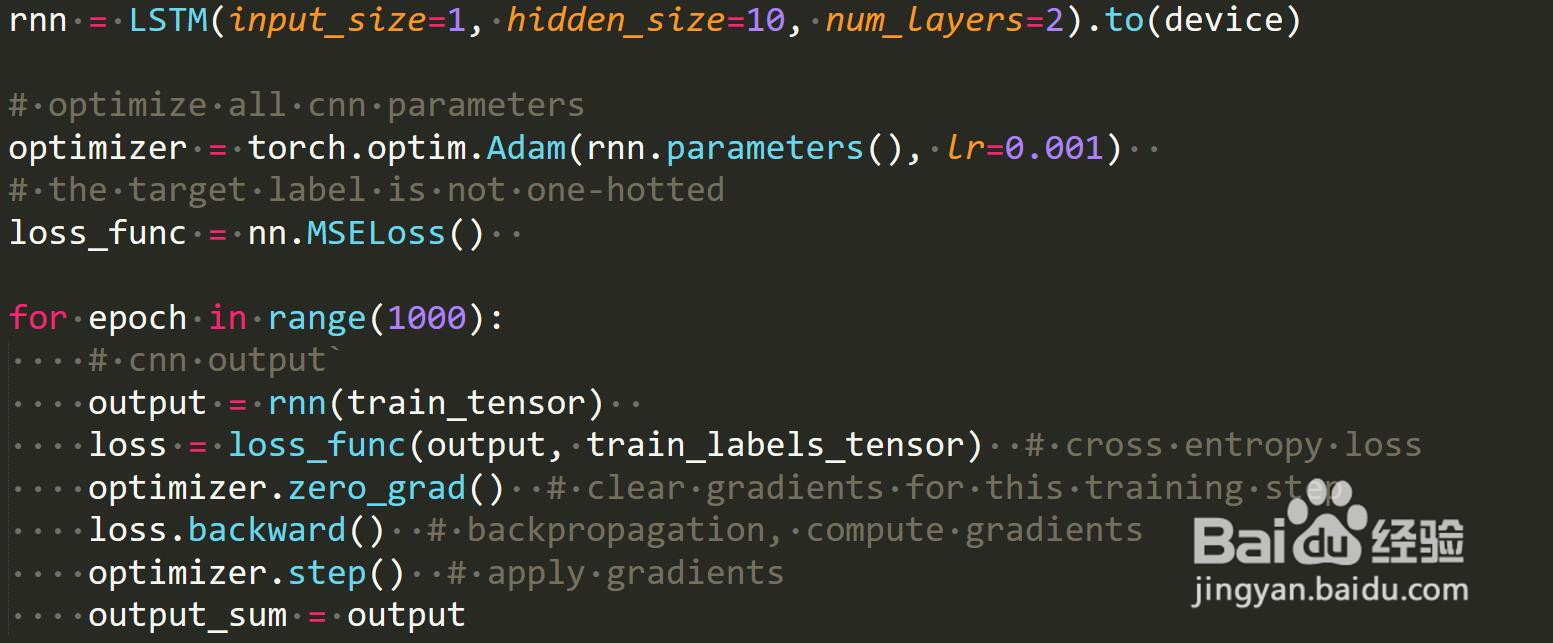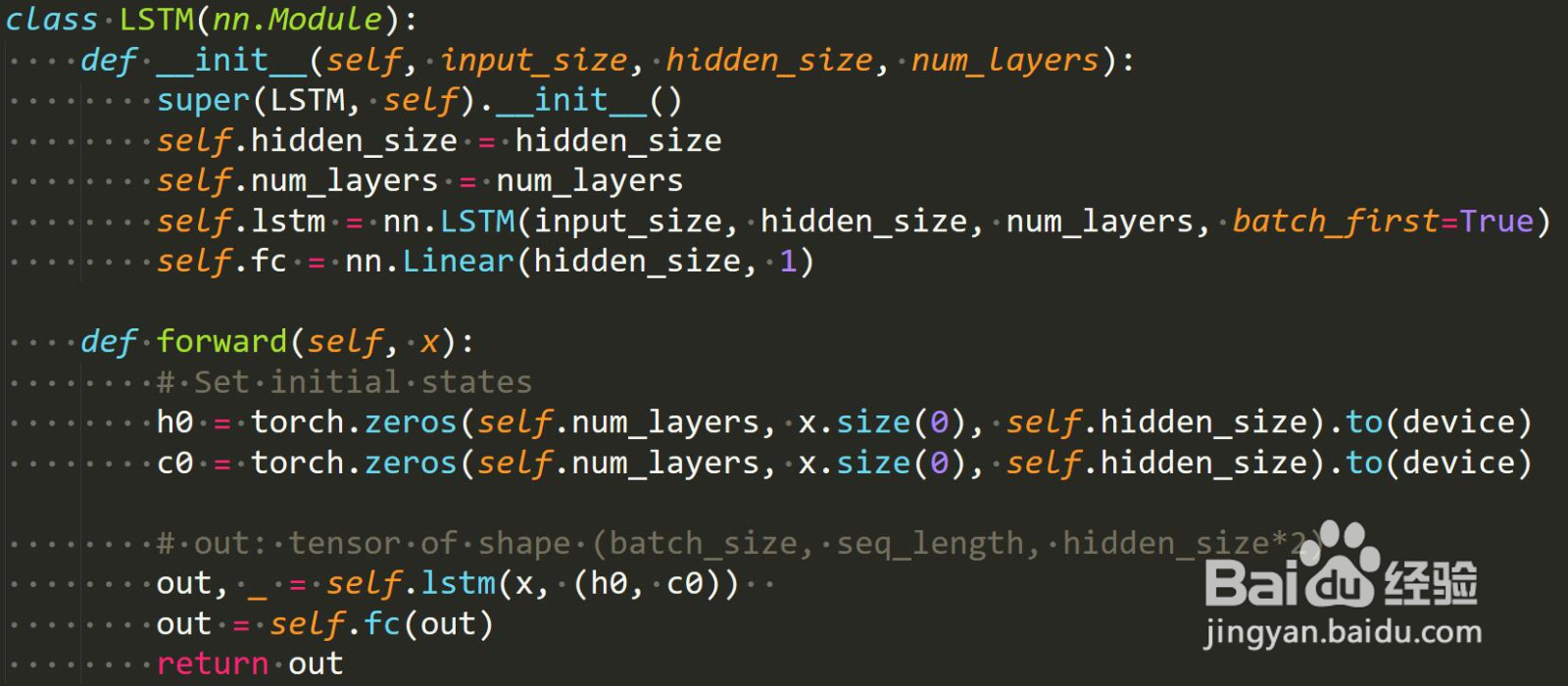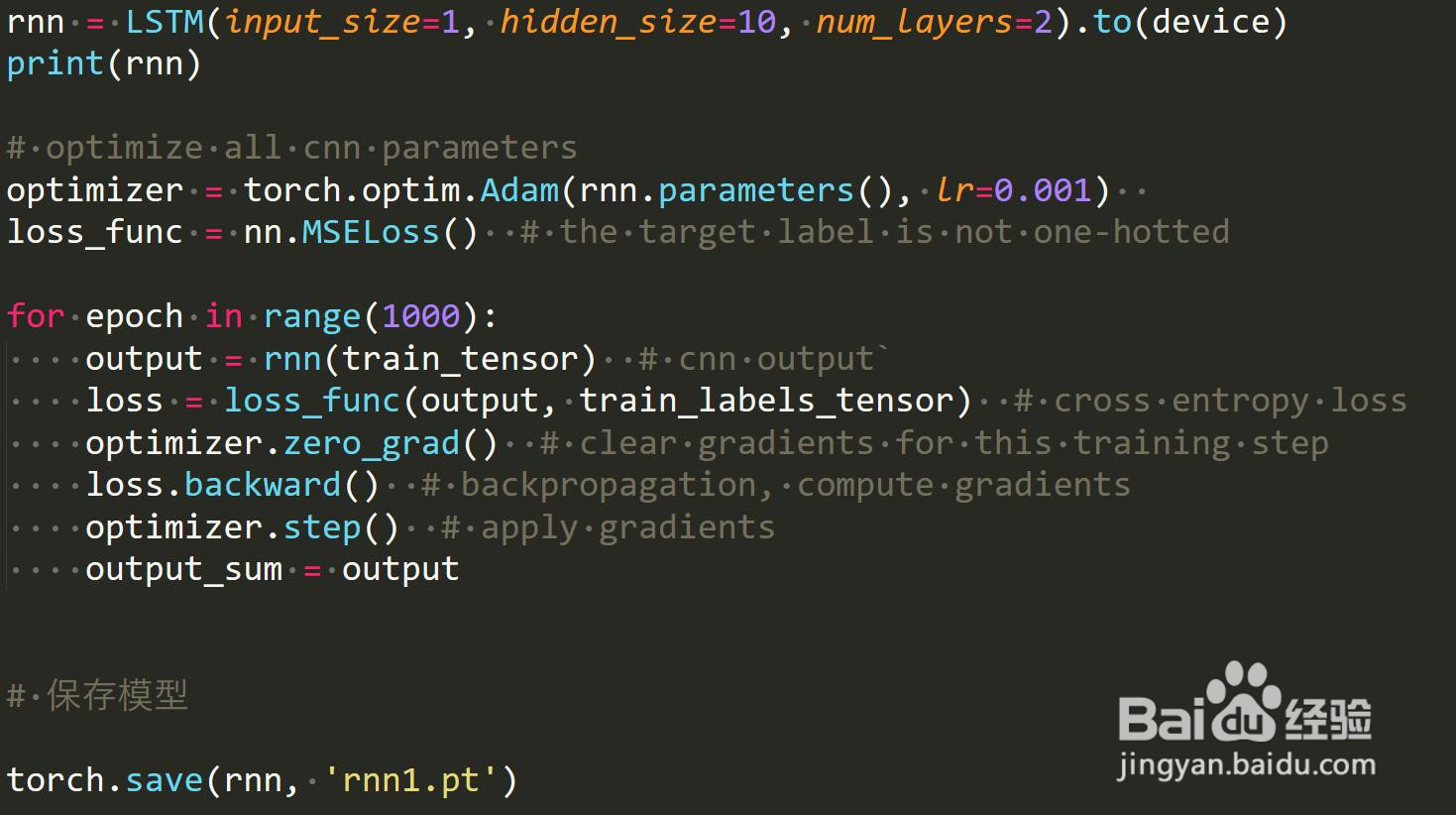Pytorch如何保存训练好的模型
1、(1)只保存模型参销糟数字典(推荐)
代码:
#保存
torch.save(the_model.state_dict(), PATH)
#读取
the_model = TheModelClass(*args, **kwargs)
the_model.load_state_dict(torch.load(PATH))
民拒

2、(2)保存整个级阅迅模型
代码:
#保存
torch.save(the_model, PATH)
#读取
the_model = torch.load(PATH)

1、pytorch会把模型的参数放在一个字典里面,而我们所要做的就是将这个字典保存,然后再调用。比如说设计一个单层LSTM的网络,然后进行训练,训练完之后将模型的参数字典进行保存,保存为同文件夹下面的rnn.pt文件:
代码:
class LSTM(nn.Module):
def __init__(self, input_size, hidden_size, num_layers):
super(LSTM, self).__init__()
self.hidden_size = hidden_size
self.num_layers = num_layers
self.lstm = nn.LSTM(input_size, hidden_size, num_layers, batch_first=True)
self.fc = nn.Linear(hidden_size, 1)
def forward(self, x):
# Set initial states
h0 = torch.zeros(self.num_layers, x.size(0), self.hidden_size).to(device)
# 2 for bidirection
c0 = torch.zeros(self.num_layers, x.size(0), self.hidden_size).to(device)
# Forward propagate LSTM
out, _ = self.lstm(x, (h0, c0))
# out: tensor of shape (batch_size, seq_length, hidden_size*2)
out = self.fc(out)
return out
rnn = LSTM(input_size=1, hidden_size=10, num_layers=2).to(device)
# optimize all cnn parameters
optimizer = torch.optim.Adam(rnn.parameters(), lr=0.001)
# the target label is not one-hotted
loss_func = nn.MSELoss()
for epoch in range(1000):
output = rnn(train_tensor) # cnn output`
loss = loss_func(output, train_labels_tensor) # cross entropy loss
optimizer.zero_grad() # clear gradients for this training step
loss.backward() # backpropagation, compute gradients
optimizer.step() # apply gradients
output_sum = output
# 保存模型
torch.save(rnn.state_dict(), 'rnn.pt')



2、保存完之后利用这个训练完的模型对数据进行处理:
代码:
# 测试所保存的模型
m_state_dict = torch.load('rnn.pt')
new_m = LSTM(input_size=1, hidden_size=10, num_layers=2).to(device)
new_m.load_state_dict(m_state_dict)
predict = new_m(test_tensor)

3、这里做一下说明,在保存模型的时候rnn.state_dict()表示rnn这个模型的参数字典,在测试所保存的模型时要先将这个参数字典加载一下:
m_state_dict = torch.load('rnn.pt');
然后再实例化一个LSTM对像,这里要保证传入的参数跟实例化rnn是传入的对象时一样的,即结构相同:
new_m = LSTM(input_size=1, hidden_size=10, num_layers=2).to(device);
下面是给这个新的模型传入之前加载的参数:
new_m.load_state_dict(m_state_dict);
最后就可以利用这个模型处理数据了:
predict = new_m(test_tensor)
1、代码:
class LSTM(nn.Module):
def __init__(self, input_size, hidden_size, num_layers):
super(LSTM, self).__init__()
self.hidden_size = hidden_size
self.num_layers = num_layers
self.lstm = nn.LSTM(input_size, hidden_size, num_layers, batch_first=True)
self.fc = nn.Linear(hidden_size, 1)
def forward(self, x):
# Set initial states
h0 = torch.zeros(self.num_layers, x.size(0), self.hidden_size).to(device) # 2 for bidirection
c0 = torch.zeros(self.num_layers, x.size(0), self.hidden_size).to(device)
# Forward propagate LSTM
out, _ = self.lstm(x, (h0, c0)) # out: tensor of shape (batch_size, seq_length, hidden_size*2)
# print("output_in=", out.shape)
# print("fc_in_shape=", out[:, -1, :].shape)
# Decode the hidden state of the last time step
# out = torch.cat((out[:, 0, :], out[-1, :, :]), axis=0)
# out = self.fc(out[:, -1, :]) # 取最后一列为out
out = self.fc(out)
return out
rnn = LSTM(input_size=1, hidden_size=10, num_layers=2).to(device)
print(rnn)
optimizer = torch.optim.Adam(rnn.parameters(), lr=0.001) # optimize all cnn parameters
loss_func = nn.MSELoss() # the target label is not one-hotted
for epoch in range(1000):
output = rnn(train_tensor) # cnn output`
loss = loss_func(output, train_labels_tensor) # cross entropy loss
optimizer.zero_grad() # clear gradients for this training step
loss.backward() # backpropagation, compute gradients
optimizer.step() # apply gradients
output_sum = output
# 保存模型
torch.save(rnn, 'rnn1.pt')


2、保存完之后利用这个训练完的模型对数据进行处理:
代码:
new_m = torch.load('rnn1.pt')
predict = new_m(test_tensor)

声明:本网站引用、摘录或转载内容仅供网站访问者交流或参考,不代表本站立场,如存在版权或非法内容,请联系站长删除,联系邮箱:site.kefu@qq.com。
阅读量:21
阅读量:32
阅读量:53
阅读量:169
阅读量:161